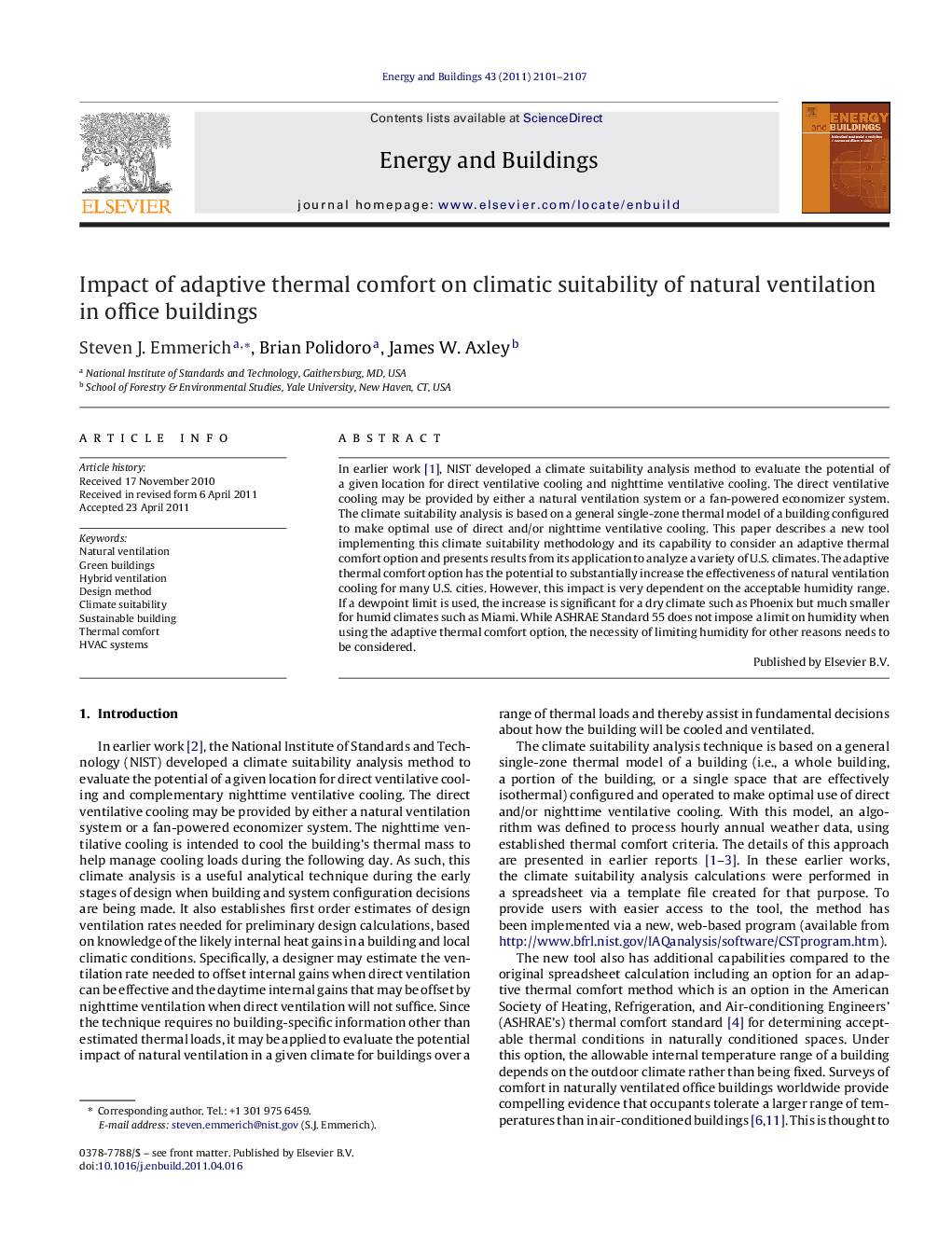| کد مقاله | کد نشریه | سال انتشار | مقاله انگلیسی | نسخه تمام متن |
|---|---|---|---|---|
| 264295 | 504098 | 2011 | 7 صفحه PDF | دانلود رایگان |

In earlier work [1], NIST developed a climate suitability analysis method to evaluate the potential of a given location for direct ventilative cooling and nighttime ventilative cooling. The direct ventilative cooling may be provided by either a natural ventilation system or a fan-powered economizer system. The climate suitability analysis is based on a general single-zone thermal model of a building configured to make optimal use of direct and/or nighttime ventilative cooling. This paper describes a new tool implementing this climate suitability methodology and its capability to consider an adaptive thermal comfort option and presents results from its application to analyze a variety of U.S. climates. The adaptive thermal comfort option has the potential to substantially increase the effectiveness of natural ventilation cooling for many U.S. cities. However, this impact is very dependent on the acceptable humidity range. If a dewpoint limit is used, the increase is significant for a dry climate such as Phoenix but much smaller for humid climates such as Miami. While ASHRAE Standard 55 does not impose a limit on humidity when using the adaptive thermal comfort option, the necessity of limiting humidity for other reasons needs to be considered.
► We describe a tool to assess climate suitability for natural ventilation cooling.
► The Climate Suitability Tool uses a simplified single-zone thermal model.
► The tool aims at early stage building design and includes adaptive thermal comfort.
► Adaptive thermal comfort increases the effectiveness of natvent for many climates.
► This impact is very dependent on whether limits are imposed on relative humidity.
Journal: Energy and Buildings - Volume 43, Issue 9, September 2011, Pages 2101–2107